Artists
How Tara Donovan Transformed More Than 200,000 Used CDs Into Monumental Sculptures
In 'Stratagems' at Pace in New York, the artist is giving new life to 'relics of a very recent past.'
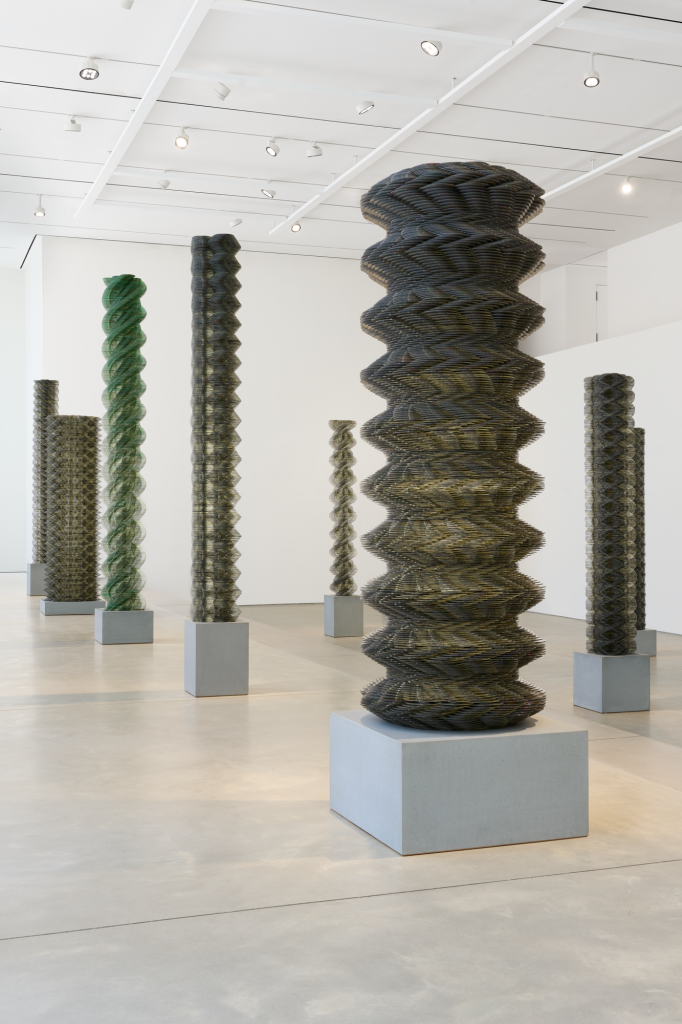
In 'Stratagems' at Pace in New York, the artist is giving new life to 'relics of a very recent past.'

Katie White

“I try to find out if a given material can transcend itself, transcend its origins, transcend its appearance,” said artist Tara Donovan as we walked around her latest sculptures, intricate columnar forms that feel at once ancient and futuristic. “Can the material take on an atmospheric and ethereal appearance when viewed in a population?” Donovan’s new works, now on view in her new exhibition “Stratagems” at Pace Gallery (through August 16) elevate an unlikely material; these works are made out of more than 200,000 recycled CDs that she’s collected over the past year.
Compact discs may be new to Donovan’s 25-year practice but they are in keeping with her longstanding reappraisal of mass-produced materials. It’s a practice that has produced sublime, large-scale installations, which are now in leading museum collections the world over.
In many ways, Donovan’s career has been ascendant from the start, but its staying power has been her embrace of experimentation. Fresh from earning her MFA, the Queens-born artist burst into the art world with a 1999 museum exhibition at Corcoran Gallery of Art in Washington, D.C. That show was soon followed by her inclusion in the Whitney Biennial in 2000. In 2005, she joined Pace Gallery and in 2008 she was awarded the MacArthur “Genius Grant.”
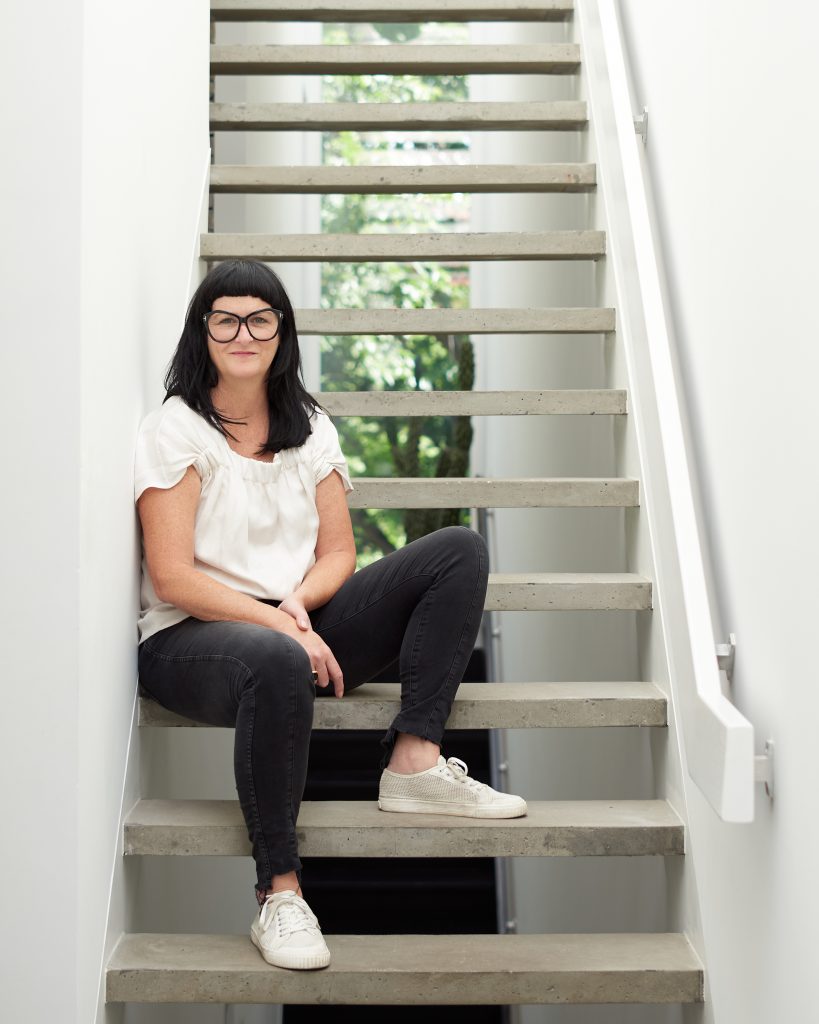
Portrait of Tara Donovan. Courtesy Pace Gallery.
She quickly became known for her site-specific installations that transformed modest, artificial, consumer objects from everyday life into biomorphic forms that conjured up natural phenomena, from rock formations to vegetal growth. Among her most iconic works are Nebulous (2002) which was made of Scotch tape, and Haze (2003), made entirely of straws. Over the years, the artist has embraced materials from slinky toys to pins. This Sunday, the Bruce Museum in Greenwich, Connecticut, will open “Aggregations” an exhibition focused on a singular, large-scale work by Donovan that is made of thousands of acrylic rods.
Uncovering the material possibilities of compact discs has been fruitful. “I definitely am not done with CDs,” she said. “It’s been fun and intense and I think I have more I can say with it.” During Frieze week, I caught up with the artist to learn more about her newest works how conversations about her work have changed over the decades.
You have a history of working with mass manufactured materials—straws, pins, pencils. In your new show, “Stratagems,” you have built these transcendent columnar sculptures out of recycled CDs. How did you wind up working with this material?
Last year I was traveling a bit and I started going to recycling centers. Some recycling centers are attached to garbage dumps, some of them have a storefront. At one space, I came across a bag of CDs that were being sold for a dollar. I bought them, brought them back to the studio, and laughed at them. They sat on my desk for months without me doing anything with them. I had a moment where I was hovering above the trash can with them in my hand. I thought: “You did pay for them. Give it a go.”
When there was a moment when I was holding them up, looking at them, and the light caught the CDs in a certain way. I thought, “Ah, there is some real potential here.” In truth, my process can be more painful than it is playful. I embark into a process of faith and failure. How can I build something structurally stable with this material? So, then I bought a ton of CDs on eBay. I sorted them by color and started to glue them face to face and get rid of the labels. Then they became a single unit.
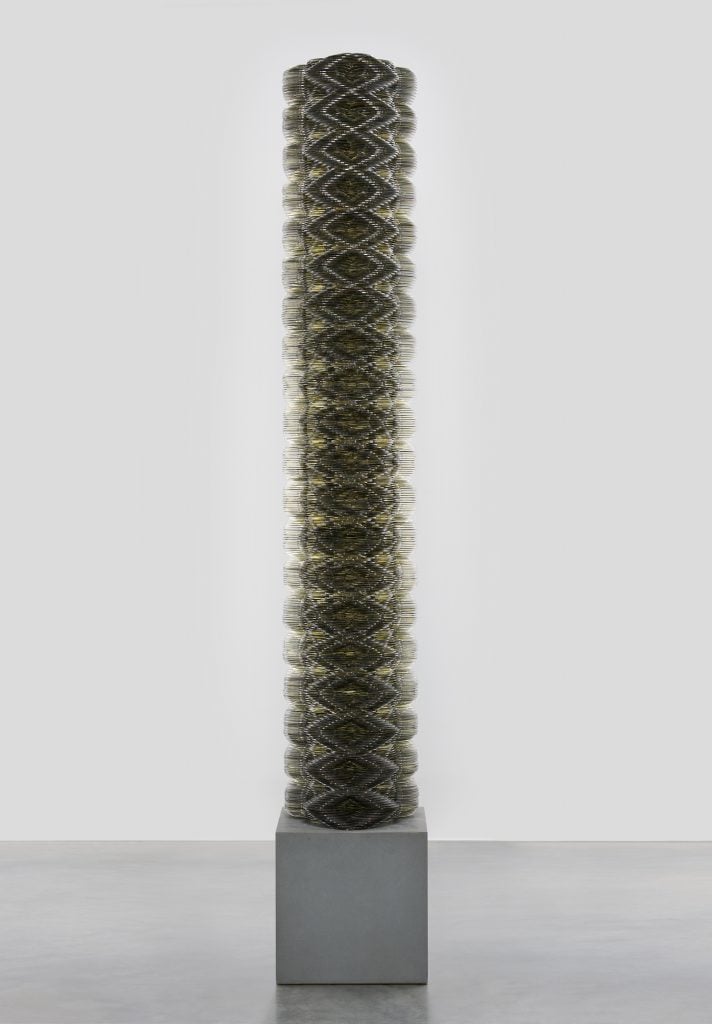
Tara Donovan, Stratagem X, 2024. © Tara Donovan, courtesy Pace Gallery.
How did you go from two CDs glued together to these monumental sculptures?
The core of my entire practice is very much in line with how architecture works. I find a basic building block and I interrogate and investigate it until I can find things that will work, for instance, tacking them together with double stick tape or trying to figure out how I can get light to travel through them. The process went on for months. These sculptures are very heavy. In total, I bought probably 500,000 CDs from eBay. The sculptures in this show include 200,000 to 250,000 CDs. Each of the CDs has data on it—maybe a few hundred sprinkled might happen to be blank but all of these CDs were recycled.
Why these tall totemic shapes? Some are like helixes.
At first, I made a few larger works that were not vertical. I’ve been with Pace Gallery for 20 years now, though, so I was thinking, in the back of my mind, if I did show these works, what could be the best place to show them? On the seventh-floor of Pace’s New York gallery, the conversation between art and architecture really becomes prioritized. The space was designed as the Pace Live space for performances and talks, so it has a different purpose.
Thinking about the view from the gallery, I started thinking of the sculptures as skyscrapers—in the ubiquity of urban architecture we see clear and reflective materials in all the facades. These works have fractal lines and prismatic effects as you walk around them. At the same time, I was also thinking about the data that’s on the CDs and what that all means. In these works, I’m strategically stacking and blocking the light or letting the light through [the CDs are separated by small intervals of space] which is essentially how music was played on CDs—by light going through it.
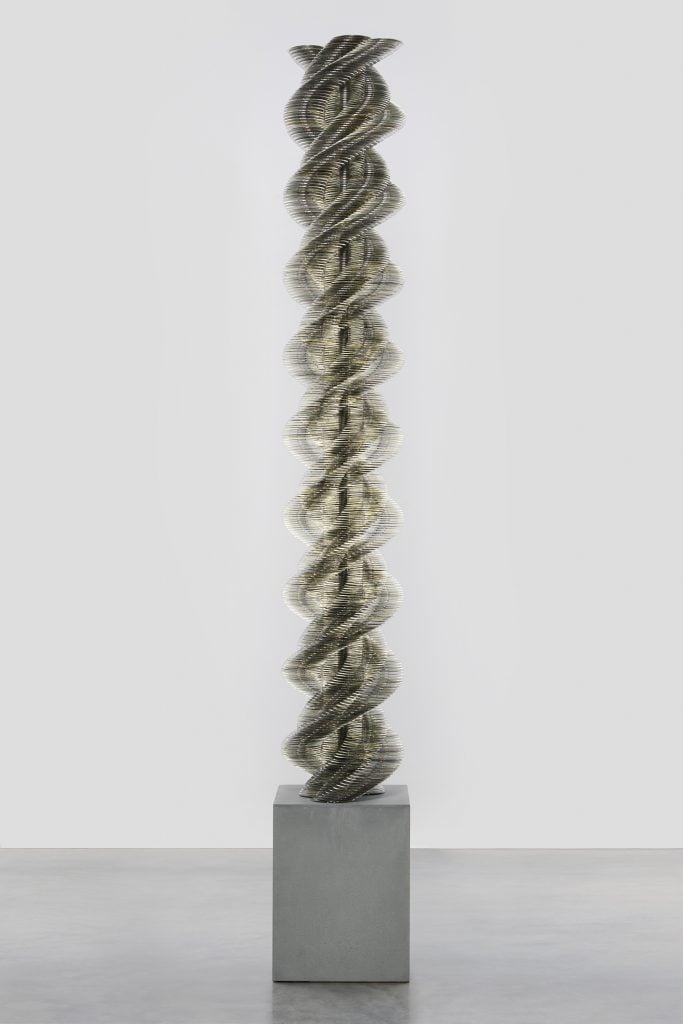
Tara Donovan, Stratagem II, 2024. © Tara Donovan, courtesy Pace Gallery.
How do you know when to stop making your sculptures bigger and bigger?
I wanted to present these works as these very formal objects with a simple modularity that could be stacked into the heavens. Most of my work is predicated on this idea of this infinite expandable field. The room or the frame is the container, but the columns could extend indefinitely.
The bases are cast concrete and part of the sculptures—inseparable from them. They hold the structure. The works are all organized in the gallery on a grid like a chess board. I think of the bases as an extension of the floor, coming up to meet each piece, a little stage for each one to perform on.
Some of these sculptures are more green in hue and others more silvery. What’s the difference between them?
The silver CDs are commercial discs with music, movies, audio books, porn, Jesus, Celine Dion. Everything. The green are CDRs, so they’re recordable. They contain whatever people valued enough to put on them, whether it’s a Grateful Dead concert or a mix. The CD is the last quantifiable object of data that exists in the world. We moved from filing cabinets to clouds. These are relics of a very recent past. I remember when the CD became a thing, it was marketed as the future. They made “forever discs” which were gold. When you think about the amount of information that is in this room is staggering.
When viewed from different angles, the sculptures look very different. From the sides, they almost seem to radiate with light, but from above they look quite solid.
From above, no light comes through them so they take on this sci-fi, heavy metal aura. These effects all came out of the experimentation of doing. I learn these effects by working with the limitations and the potential of the material and figuring out what looks good and what can structurally sustain itself. I learned so much from making these works and there’s more that I can do still, which I’m excited about. The structures of these works are essentially woven which allows for a number of possibilities.
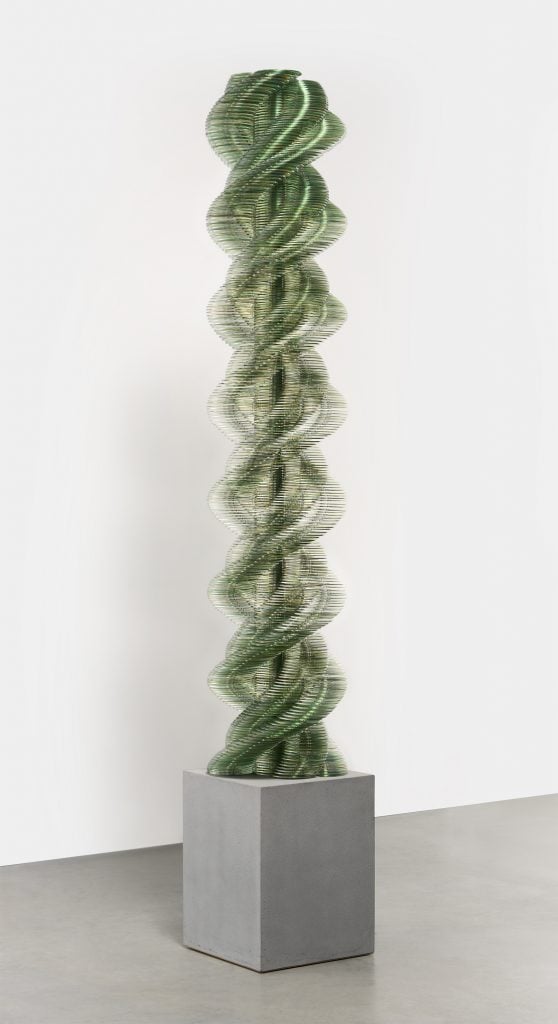
Tara Donovan, Stratagem I, 2024. © Tara Donovan, courtesy Pace Gallery.
What does the exhibition title “Stratagems” mean?
I came across this word “stratagems” last year. Just taking apart the word there is layering and a jewel-like nature—”gems.” The literal definition of the word is a carefully thought out plan that is often used to deceive people. There’s so much strategy in these works, and it can become a very meditative practice since I’m building these by hand. Geometry can be a contemplative focus when you think of a sacred architecture. The circle is a symbol of unity, and with the concentric layering in these works it meanders, much like Islamic architecture. There are many strategies in building these things and every decision impacts what the overall piece becomes.
For someone approaching your work for the first time, is there anything they should keep in mind? Is there something you hope people take away?
No, I don’t dictate anything. I rarely even title my works. I don’t want to force anything onto people. I want people to bring their own associations to the work. I use a lot of everyday materials and I think that frankness is important to my work and that people have a personal experience when they come upon it. People are seeing things that have passed through their hands thousands of times and can have a totally new experience, a phenomenological experience, where their perception has been shifted both visually and psychologically.
Do you think your process has changed over the decades?
The conversations around my work have changed more than my process. I have a long history of working with mass-manufactured materials. For instance, I made a sculpture out of a million drinking straws, stacked and buttressed against a wall. That was 25 years ago. The conversation around that work has really shifted: it’s interesting to see my work repositioned in contemporary times and within conversations about the Anthropocene and our impact on the environment. That’s the power of art, right? The meanings can shift and change.